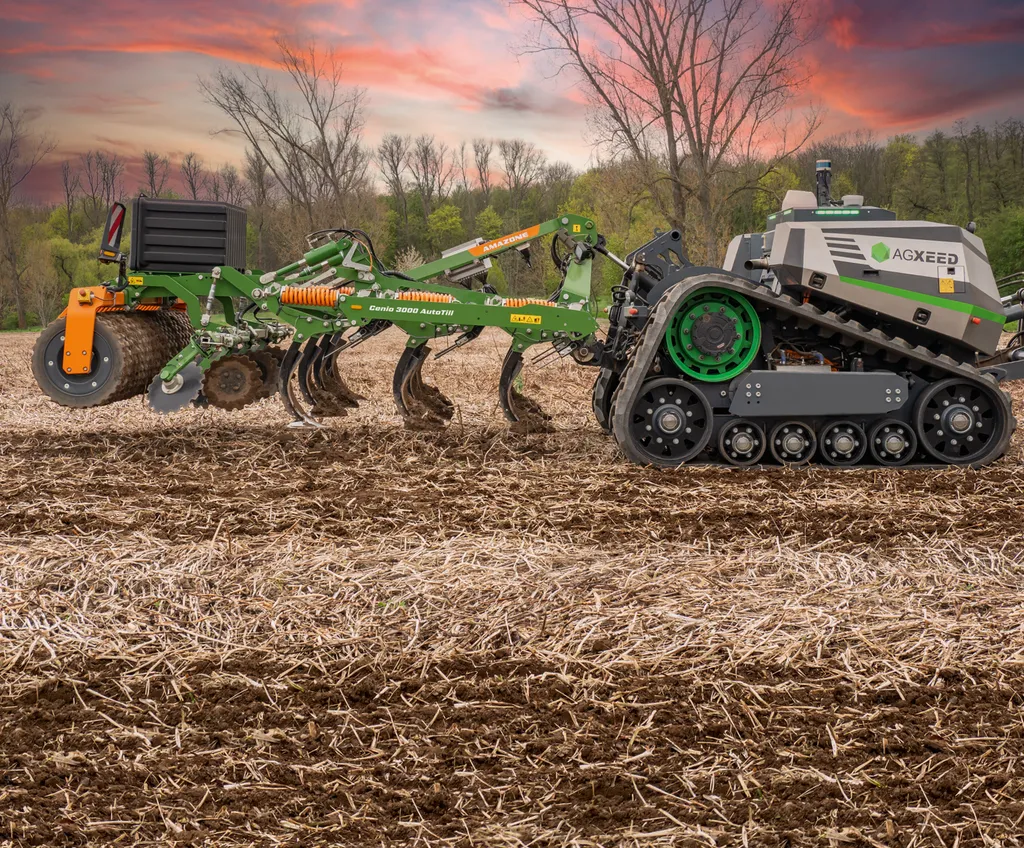In the rapidly evolving world of agricultural technology, the integration of smart implements with autonomous machinery is pushing the boundaries of precision farming. A recent development in this arena is the AutoTill set, designed to enhance the capabilities of the Amazone Cenio cultivator when used with the AgBot robot tractor. This innovation is set to redefine the way farmers approach field operations, offering a more autonomous and efficient solution.
The AutoTill set is a collection of five sensors mounted on the Amazone Cenio 3000 Super-Super cultivator, a 3-meter wide implement suitable for various cultivation tasks. These sensors replace the need for constant driver observation, transmitting data to the AgBot and subsequently to the remote operator. The sensors include flippers with sensors in front of each tine to detect crop residue buildup, sensors on each share to alert if a tine is lost, sensors on the spring-loaded protection to detect tine lift due to obstacles, a rotation speed sensor on the packer roller to monitor blockages, and a tilt sensor to ensure even working depth across the implement’s width.
Marijn Vermuë, an arable farmer in Werkendam, Netherlands, has been testing the AutoTill set on his AgBot-equipped Cenio 3000. During the NPPL robot tour on 13 August 2025, Vermuë shared his experiences with fellow farmers. He highlighted how the AutoTill set has enabled the AgBot to work autonomously without constant supervision, although the remote operator still receives alerts for specific events.
The implications of this technology are significant. The AutoTill set is being developed in three levels. Currently, it operates at Level 1, focusing on monitoring, warning, and stopping the machine based on pre-set parameters. Level 2, prevention, aims to adjust machine settings to prevent issues like clogging or wheel slip. Level 3, resolution, involves the machine autonomously resolving problems, requiring advanced computing and situational awareness.
Pieter Rooijakkers, sales and product trainer at AgXeed, the manufacturer of the AgBot, explained that the current system allows for customizable responses to different scenarios. For instance, if crop residues cause a blockage, the machine might slow down or reverse to clear the debris. If a tine is lost, the machine stops immediately. This level of customization ensures that the machine operates efficiently and safely, minimizing downtime and maximizing productivity.
Vermuë has already worked dozens of hectares with the AutoTill-equipped Cenio 3000, reporting no issues during normal operations. However, during a demonstration, a substantial pack of chopped straw caused blockages, leading to several stops. Despite this, Vermuë remains enthusiastic about the technology, noting that it extends the machine’s working time and ensures consistent performance.
The AutoTill set is a factory-fitted option from Amazone, announced in 2023. It uses similar sensors to those found on Amazone’s Isobus implements, enabling automatic adjustment and function monitoring based on pre-set parameters. The technology is currently being tested on three prototypes, with Vermuë’s setup being one of them. The upcoming Agritechnica event is expected to reveal more details about the kit’s availability and cost.
As the agricultural industry continues to embrace automation and smart technology, innovations like the AutoTill set are paving the way for more efficient and autonomous farming practices. By integrating advanced sensors and intelligent control systems, farmers can achieve greater precision and productivity, ultimately contributing to more sustainable and profitable agricultural operations.

